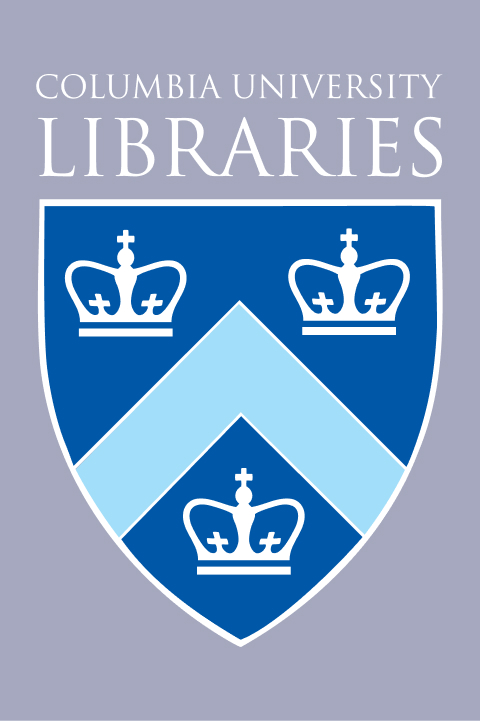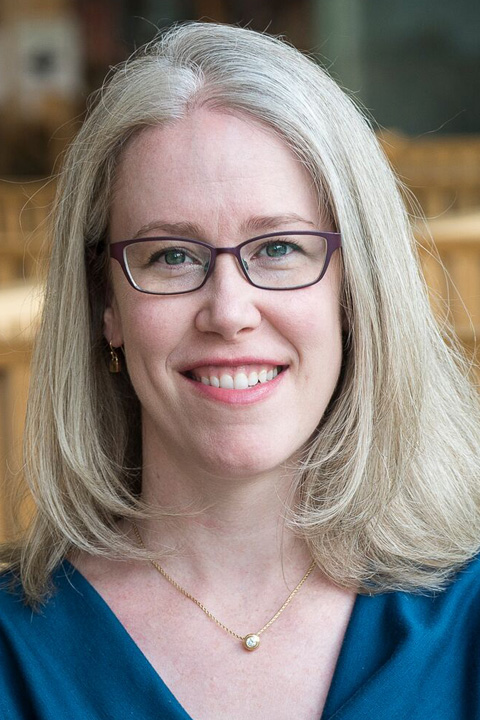Slavic & Eastern European History
Faculty and students at Columbia have access to one of North America’s largest research collections for Slavic, East European, and Eurasian studies—both in the vernacular languages of these regions, as well as in English and Western European languages. Holdings range chronologically from a late 13th-century Serbian royal charter to the latest monographs from Bucharest. The Librarian for Russian, Eurasian & East European Studies actively collects new humanistic and social science imprints and electronic materials pertaining to, and in the various vernacular languages of, Albania, Belarus, Bosnia, Bulgaria, Croatia, Czech Republic, Georgia, Hungary, Kazakhstan, Kyrgyzstan, Macedonia, Mongolia, Montenegro, Poland, Romania, Russia (including some sixty ethnic minority languages), Serbia, Slovakia, Slovenia, Tajikistan, Turkmenistan, Ukraine, and Uzbekistan. (Armenian materials are the responsibility of the Librarian for Middle Eastern & Islamic Studies). Each year, via approval plans*, gifts, and special acquisitions, Columbia adds thousands of new titles to the collections. Cooperative partnerships with the Cornell University Library (known as “2CUL Slavic”) and with Princeton, The New York Public Library, and Harvard University Library further expand the resources at the disposal of students and faculty both locally and within the Borrow Direct and Ivy Plus Library Confederation networks by reducing duplication and ensuring geographical and linguistic coverage for the entire region.
Decades before the term “area studies” entered the academic lexicon, Columbia University Libraries had a long-established tradition of collecting in the vernacular languages of Eastern Europe. The earliest record of a library acquisition in the Slavic field dates to 1903, when Columbia acquired a significant collection of Czech, Polish, and Russian anarchist literature. This was soon followed by the donation of more than a thousand volumes by the statesman (and in 1905, honorary Columbia LLD) Count Sergei Witte (d. 1915). In 1907, the financier and noted philanthropist Felix W. Warburg (d.1937) gave more than 2,700 volumes of Russian revolutionary literature published in exile—in this same year, Columbia University Libraries mounted an exhibition in Low Library of anti-tsarist cartoons from the first Russian Revolution of 1905. Beginning with the establishment in 1915 of the Slavonic (now Slavic languages and literatures) department by the remarkable polyglot John Dynely Prince (d.1945) and his protégé Clarence A. Manning (d.1972), Slavic and East European holdings at Columbia have grown uninterruptedly—and sometimes spectacularly, such as the 1931 acquisition of the 3,600-volume library of the historian Aleksandr E. Presniakov (d.1929) of Leningrad. As early as 1919, courses were first offered dealing with the non-Slavic peoples of the Caucasus and West Asia, yet it was the arrival on campus in the late 1950s of Edward A. Allworth (d. 2016)—considered by many to be the father of Central (West) Asian and Soviet nationalities studies in the United States—that Columbia initiated intensive development of vernacular collections for these diverse regions and non-Slavic peoples.
Complementing Columbia’s extensive holdings of print materials is Columbia’s Bakhmeteff Archive of Russian and East European History & Culture, founded in 1951 and curated today by Tanya Chebotarev (see Section 3h, below). Named for Boris A. Bakhmeteff (d. 1951), the last ambassador of the Russian Provisional Government to the United States and a longtime professor at Columbia, it is the second largest (after California’s Hoover Institution) repository of manuscript, printed, and visual materials related to the Russian and Eastern European émigré communities outside of the homelands.
This document outlines the Libraries’ general policy on collections for Slavic, East European & Eurasian studies, but it is not intended to be a rigid set of rules; collection suggestions from students, faculty, and researchers are welcome. (See contact information below.)
*Pre-established subject criteria for new materials, that providing selection guidelines to our network of mostly “in-country” book vendors.
a. Undergraduate
By acquiring humanistic and social science materials in English and other Western European languages, the Slavic, East European & Eurasian studies collections support a broad spectrum of undergraduate academic departments, most especially students enrolled at Columbia College (CC), Barnard College (BC), and the School of General Studies (GS). Vernacular-language collections particularly support advanced undergraduate majors in Columbia’s Department of Slavic Languages and Barnard’s Slavic department, as well as advanced students in the Departments of History and Political Science. “Heritage” language students (that is, those who grew up in households where a Slavic or East European language was spoken) with a personal interest in Eastern European and Eurasian history, culture, and society benefit from the collections regardless of academic major.
b. Graduate and Professional Schools
The graduate-level, professional, and faculty populations of Columbia University derive particular benefit from access to diverse collections across a broad spectrum of subjects in the humanities and social sciences, law, and education. The collections in Slavic, East European, and Eurasian languages are an integral component of Columbia’s outstanding inter-disciplinary resources, providing perspectives on subjects from a diverse and populous world area.
Obviously, the large Department of Slavic Languages based in Hamilton Hall is a major constituency for the collection, as are the graduate departments of political science and history and of course the School of International & Public Affairs (SIPA), including students enrolled in the terminal Master of Arts in Russian Studies program. Vernacular-language holdings pertaining to the laws and administration of the countries of Eastern Europe and the former Soviet Union are collected, as are works on educational systems and issues.
As fine art and architectural works include, for example, Russian-language studies of Western European artists, students in the Department of Art History & Archaeology, and the Graduate School of Architecture, Planning and Preservation (GSAPP), regardless of facility in a given Slavic or East European language, benefit from access to the collections. The often intensely visual materials from Eastern Europe acquired for Avery Architectural & Fine Arts Library as well as Butler Library’s holdings of graphic novels ensures that their contents are broadly accessible to faculty and students working outside the Slavic and East European field.
c. Institutes, Interdisciplinary Programs, etc.
Faculty, visiting scholars, post-docs, and the students of two cross-disciplinary entities—the Harriman Institute,and the East Central European Center—regularly consult the print and electronic resources of the Libraries. Columbia University Libraries and the institutes have always had a close relationship―in fact, in 1946 the founders of Columbia’s first-in-the-nation Russian Institute (now the Harriman Institute) were responsible for the initial establishment and support of the position now known as the Librarian for Russian, Eurasian & East European Studies. Today, the Harriman Institute alone numbers some seventy faculty affiliates working across a broad spectrum of academic disciplines.
d. Course Reserves
Selection for course reserves is up to the individual faculty member. The Librarian will do whatever is possible to secure specific materials lacking in the collection.
a. Print
Columbia actively collects print materials published in the region on the following broad subjects: anthropology, archaeology, architecture, art and art history, decorative arts, economic history, environmental issues, ethnic Minorities, folklore, genealogy, graphic arts, graphic novels, film, history from ancient times to more recent decades, history of science and technology, human ecology, international relations, Jewish studies (in Slavic and East European languages), music, performing arts, LGBTQ communities, philology and linguistics, law and society, library history, literature, politics and government, regional studies, religion, social history, sociology, and theology. Reference works in a wide array of subject areas are actively acquired, often located in the Butler Library stacks, but with non-circulating status. More specialized reference titles are located off site.
The overall emphasis is on recent vernacular-language materials and scholarly small print-run publications (under 350 copies) whose primary place of publication is on the present-day territory of the countries listed or in a given language published in neighboring countries (e.g., Hungarian titles published in Romania).
Titles in English dealing with history, literature, the performing arts as well as biography are located in the Butler Library stacks. English-language titles dealing with topics in the social sciences are located in Lehman Social Sciences Library’s off-site storage facility. The default location for works about the region in other Western European languages (French, German, Dutch) is also off site.
b. Digital Collections
Columbia University Libraries offers a robust array of electronic resources. The Slavic, Eurasian & East European collections strive to obtain new commercial databases relevant to the field as they appear. These include regular supplements to the immensely valuable East View Universal Database series (www.columbia.edu/cgi-bin/cul/resolve?clio4320231), the Central & East European Online Library (CEEOL) (www.columbia.edu/cgi-bin/cul/resolve?clio5887498), and Emerging Markets Information Service (EMIS) (www.columbia.edu/cgi-bin/cul/resolve?ALP2674) which includes newspapers from throughout Eurasia, including coverage of much of former Soviet Central Asia, to name just a few.
The collections regularly invest in the acquisition of individual electronic titles (e.g. searchable deep backfiles of serials, digitized archival collections), e-resource packages (e.g. digitized current newspapers of the Northern Caucasus), and new research tools (e.g. indexes of articles found in Slavic-language journals) as they are developed by commercial vendors.
In partnership with Princeton University, New York University, and Yale University, Columbia is actively involved in the Ivy Plus Library Confederation to preserve endangered websites in the region. Initiated in 2018, this effort is archiving sites belonging to minority political parties and oppressed groups (e.g. the LGBTQ communities) throughout Eastern Europe.
c. Media
Columbia strives to collect a representative sample of cinema and documentaries from throughout the region, largely as DVDs, although a large retrospective VHS collection is held as well. Collecting audio CDs of works by Eastern European composers is largely the responsibility of the Music & Arts Library. (Please also see Section 3b, above, concerning digital resources).
d. Languages Collected
Albanian, Belarusian, Bosnian, Bulgarian, Croatian, Czech, Georgian, Hungarian, Kazakh, Kyrgyz, Macedonian, Mongolian, Polish, Romanian, Russian (as well as some sixty ethnic minority languages from the Russian Federation, ranging from Abazin to Yakut), Serbian, Slovakian, Slovenian, Tajik, Turkmen, Ukrainian, and Uzbek. (Armenian materials are the responsibility of the Librarian for Middle Eastern & Islamic Studies; Yiddish and Hebrew materials published in or about the region are collected by the Jewish Studies Librarian.)
e. Chronological Focus
Columbia faculty and student interests are wide-ranging and the chronological parameters of the collections reflect this. One must also keep in mind that many of the regions and peoples represented in these collections achieved independence only relatively recently. This has permitted an expansive, post-communist reassessment of their histories and literatures. We do not impose a chronological limit on our collecting.
f. Geographical Focus
The principle collecting focus is on current-year publications produced both in the region and about the region. However, materials by in-country authors about, for example, the United States, foreign literati or artists, or relations with other parts of the world, are also collected.
g. Imprint Dates Collected
The main focus of collecting is current and recent (+/- three years) imprints. Gift offers of published materials are carefully searched against OCLC’s WorldCat to ascertain the number of available copies in the Libraries’ shared off-site storage facility (ReCAP) and Borrow Direct to limit redundancy in holdings. Decisions as to whether to duplicate are made on the basis of the perceived rarity of item, special features or provenance unique to the item in hand, and/or the accessibility of available in-network copies: if a copy at a given institution resides in a non-circulating collection, it makes sense to acquire an additional copy that could circulate in-network. Rare or unique materials from any period may be considered.
In considering antiquarian acquisitions offered via gift or purchase, no specific chronological ranges are established in advance: rare or unique materials from any period are welcome. That being said, Columbia’s particular strengths are in the area of late 19th- and early 20th-century imprints from throughout the region, and we actively strive to build these collections. As with newer imprints, however, considerable care is taken to ensure that the same printed item does not already reside in another local or regional collection (spanning from New Haven to Princeton) unless it is an item of extreme rarity or unusual provenance.
When one considers how few academic libraries collect in the languages of this vast region, one may consider everything we do to fall under the rubric of “Distinctive and Special.” Columbia is one of a handful of American university libraries that strives to be ecumenical in the languages collected, recognizing that the cultures and societies of the region deserve to be represented in the holdings of a major academic institution.
An example of this is provided by Columbia’s rich holdings of Central Asian, Caucasian, and Russian Federation minority language imprints, begun under the supervision of the late Professor Edward Allworth and continued down to the present day. In the late 1950s, Professor Allworth discovered that Columbia had only one book in Uzbek—a language spoken by some 32 million people, occupying a territory on the Silk Road and with origins in the 1st millenium BC. Thus began a quest to build a diverse collection documenting the languages, histories, and cultures of the peoples of the former Soviet Union.
Both the Rare Book & Manuscript Library and the Avery Architectural & Fine Arts Library hold many Eastern European rarities from throughout the region, most especially those produced in Russia and East Central Europe. In recent years, Columbia University Libraries has taken particular pains to document and build upon holdings of Eastern European modernist writers and artists hailing from the Baltic to the Balkans, from Prague to Tbilisi, from Riga to Plovdiv—most especially those active in the period between the World Wars. Collected by few American research libraries, holdings are wonderfully diverse, offering examples of how broader artistic, literary, and political trends were inflected in the cities of the region.
Current textbooks produced in various nations of the region and used in the teaching of history, literature, and language at the secondary and university level are collected for specific languages, in coordination with colleagues at other members of the East Coast Consortium of Slavic Library Collections. Political ephemera (e.g. party platforms, election flyers, campaign buttons, etc.) are regularly supplied by approval vendors, and added to collection-level records (e.g. “Hungarian Political Parties: Materials 2009--2017.”
Recent antiquarian acquisitions, as well as notable collections received (e.g. the working library of Nobel Prizewinner Joseph Brodsky) are reported in the twice-yearly 2CUL Newsnotes (2010--present), archived on the sidebar of this page.
The main goal of the Bakhmeteff Archive of Russian and East European History and Culture, a component of the Rare Book & Manuscript Library (RBML), is to preserve and document the Russian and East European émigré heritage as well as to serve the general curricular needs of the students and faculty of Columbia University. The archive also plays a significant role as a rich source of information for scholars from the United States and abroad studying subjects related to the Russian diaspora and Eastern European émigré communities. A printed catalog of the holdings, Russia in the Twentieth Century: The Catalog of the Bakhmeteff Archive of Russian and East European History and Culture, Rare Book and Manuscript Library, Columbia University, was published in June 1987 by G. K. Hall.
Ranging widely in subject matter from art history and literature to organizational history the Archive consists of approximately 1,500 collections with more than 1.5 million individual items, including letters, documents, manuscripts, photographs, prints, clippings, and artworks. Besides original materials, the archive collects relevant newspapers, journals, leaflets, and posters (legal and illegal), brochures of a political character, photographs, drawings (including caricatures and cartoons), and many other materials of historical significance. One can perform a cross-collection search for archival materials from the Archival Collections Portal.
The archive’s greatest collecting strength is in the manuscript and visual materials of prominent figures in politics, literature, art, and religion from the “first wave” of Russian emigration (1880--1940). Holdings also include many collections from the “second wave” (1945--1970) of Russian emigration and includes papers of prominent figures in politics and culture as well as memoirs and personal papers of “ordinary witnesses of the epoch.” Materials from the “third and fourth waves” of Russian emigration (1970--present) are also collected. The archive includes almost 1,000 processed collections.
The collapse of the Soviet Union at the beginning of the 1990s and the rejection of the socialist model of economic development in Eastern Europe have changed the international scene. Participants in the current rewriting of history are drawing heavily on the unknown legacy of their predecessors. To satisfy this growing demand for information, more Eastern European collections were acquired for the Bakhmeteff Archive.
In recent years, a special effort has been made to acquire more materials related to subject areas, where the archive is already strong, principally Russian and East European émigré literature, philosophy, art, and science, émigré benevolent and professional organizations, Americans in Russia, American views of Russia and Eastern Europe, and American-Russian diplomatic relations.
a. Consortia and Collaborative Collecting with Other Institutions
Columbia’s Slavic, Eurasian & East European collections are in the vanguard of efforts to capture more of the print publishing output of these vast and diverse regions by working collaboratively with peer institutions and common vendors.
These efforts include: 2CUL, a partnership between Columbia and Cornell University Library established in 2010, whereby the Russian, Eurasian & East European Studies Librarian manages non-duplication approval plans for current materials for both institutions. Materials are easily requested by students and faculty on both campuses via Borrow Direct and the ReCAP Slavic Partnership, initially between Columbia, Princeton, and NYPL, which since 2010 has divided responsibility for collecting in certain languages and certain regions among the three partners. The initiation of an integrated catalogue in 2017, whereby NYPL and Princeton records are available for request via CLIO has greatly simplified resource sharing among three of the nation’s greatest collections. Harvard’s associate membership in ReCAP allows for the further expansion of coordinated collection development, deepening holdings and expanding student and faculty access to remarkable Slavic and East European collections.
b. Location Decisions and Selection for ReCAP
The Manhattanville expansion notwithstanding, space on campus—for any purpose, most especially for long-term book storage—remains limited. To provide a sense of the challenge, one should note that if all Columbia’s print holdings pertaining to Slavic and East European studies—very approximately 2 million volumes―were consolidated in Butler Library, three-quarters of all extant stack space would be for this world region alone!
The existence of tried and true inter-campus delivery systems makes the choice of locating materials at the high-density, climate-controlled ReCAP storage facility near the Princeton campus a relatively easy one and so the vast percentage of Columbia’s new acquisitions in Slavic and East European languages are located off site, enabling quick retrieval that is free from human error: if it says in CLIO that the book is on-shelf in ReCAP, it is. Placing materials at ReCAP also greatly facilitates cross-institutional access to collections, allowing for an unprecedented degree of collection coordination between academic libraries.
The one subject area where books are located on campus is Russian literature, which is limited to new editions of the classics or new biographies of major figures that are likely to be requested more frequently. Also located on campus (in Butler Library) are English-language histories, biographies, and literary studies produced by academic presses as well as translations of authors from the region into English. Broadly-based reference works―for example, major dictionaries and encyclopedias―are placed in the Butler Library stacks for on-site use only.
Intentional duplication of titles is limited to works identified by faculty as being central to a specific course. In these cases, no more than a couple copies would be obtained, one of which should be placed by the faculty member on reserve.
Deduplication only takes place if a title has been identified for relocation to ReCAP and a copy already exists on shelf at that facility. Even in this instance, the Librarian would inspect the copy that would potentially be withdrawn for any unique features/unusual provenance before assenting to deduplication.
c. Deaccessioning
Titles are deaccessioned only in cases where the physical copy is disintegrating and no longer serviceable in paper format. In these instances, either a preservation photocopy is made, or a digital surrogate created. Materials located in RBML and the Avery Classics Collection are never deaccessioned.
d. Digitization and Preservation
Whenever possible, components of the collection located in RBML are digitized and surrogates made available either via the Digital Library Collections website or to in-house readers in digital format along with the original collection. Original formats are retained. A recent example of the former is Russian & Early Soviet Sheet Music, a collection of scores published from 1904 to 1938 (accompanied by a descriptive essay, located in Academic Commons). Two examples of the latter are the Thomas de Waal Interviews, 1994--2001, consisting of more than seventy hours of audio cassette tape interviews conducted by Thomas de Waal with some sixty participants and policymakers during the struggle between former Soviet Republics Armenia and Azerbaijan over the disputed Nagorno-Karabakh region and conflict of Russia with the breakaway republic of Chechnya, and the Gay Humphrey Matthaei and Francis B. Randall Collection, which includes digitized copies of raw film footage shot by four graduate students from Columbia's Russian Institute during an an eight-week journey across the Soviet Union in 1954--just seventeen months after the death of Stalin and before Khrushchev had consolidated power.

Robert H. Davis
Russian, Eurasian & East European Studies Librarian
- Global Studies

Tanya Chebotarev
Curator, Bakhmeteff Archive
- Rare Book & Manuscript Library

Teresa M. Harris
Director, Avery Architectural and Fine Arts Library
- Avery Library

Peter Magierski
Middle East & Islamic Studies Librarian
- Global Studies
Last updated: November 2018